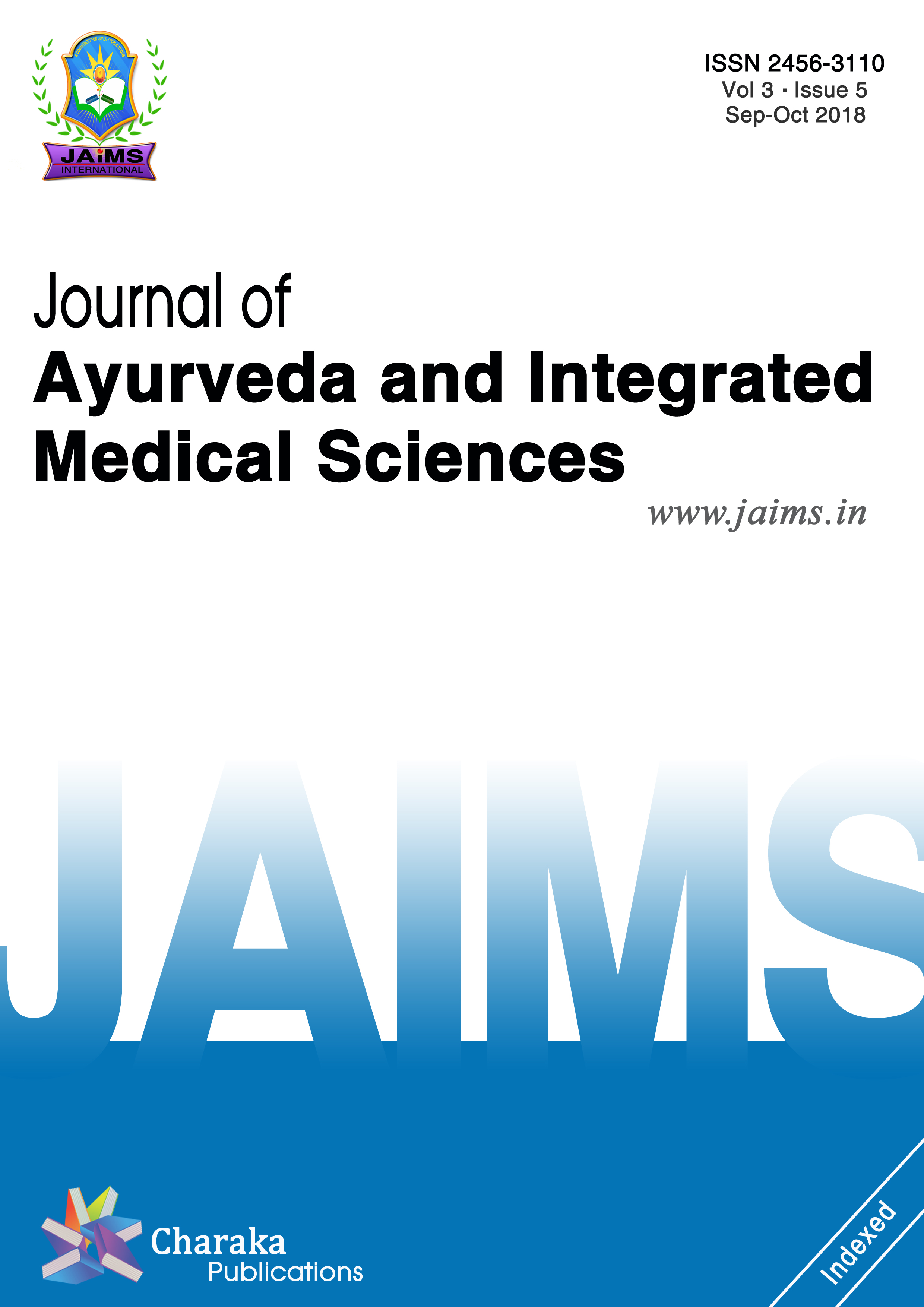Management of Uterine Fibroid in the Ayurvedic perspective - A Case Study
DOI:
https://doi.org/10.21760/jaims.v3i05.523Keywords:
Uterine Fibroid, Leiomyoma, Uterine Myomas, FibromyomasAbstract
Uterine fibroids are commonest benign tumor of the uterus. Histologically this tumor is composed of smooth muscle and fibrous connective tissue, so named as uterine leiomyoma, myoma or fibroma. The cause for some of the most common gynecological problems among women presenting to gynecology emergency and outpatient departments. They are often asymptomatic but they can cause a multitude of symptoms such as abnormal uterine bleeding, a feeling of pelvic pressure, urinary incontinence or retention, or pain. Uterine fibroids are a major cause of morbidity in women of a reproductive age (and sometimes even after menopause). There are several factors that are attributed to underlie the development and incidence of these common tumors, but this further corroborates their relatively unknown etiology. The most likely presentation of fibroids is by their effect on the woman’s menstrual cycle and pelvic pressure symptom.
Downloads
References
Wilcox LS, Koonin LM, Pokras R, Strauss LT, Xia Z, Peterson HB. Hysterectomy in the United States, 1988-1990. Obstet Gynecol. 1994;83:549–55. [PubMed]
Gambone JC, Reiter RC, Lench JB, Moore JG.The impact of a quality assurance process on the frequency and confirmation rate of hysterectomy. Am J Obstet Gynecol. 1990;163:545– 50. [PubMed]
Article on Treatment of uterine fibroids: Current perspectives by Amir T Khan and Manjeeth sharma.
Sahasrayogam English translation by Dr. K. Nishteshwar, Chaukhamba Sanskrit Orientalia, Varanasi, Edition 2006, Kashaya Prakarana,pp-254,pg-540.
Sahasrayogam English translation by Dr. K. Nishteshwar, Chaukhamba Sanskrit Orientalia, Varanasi. Edition 2006, Lehya Prakarana,pp-254,pg-540.
Shastri A, Bhaisajya Ratanawali, Vidyotani Hindi tika, Mishra B. Ed, Stree Rogadhikara, Chaukhambha Prakashana, Varanasi, 2011,p.381.















